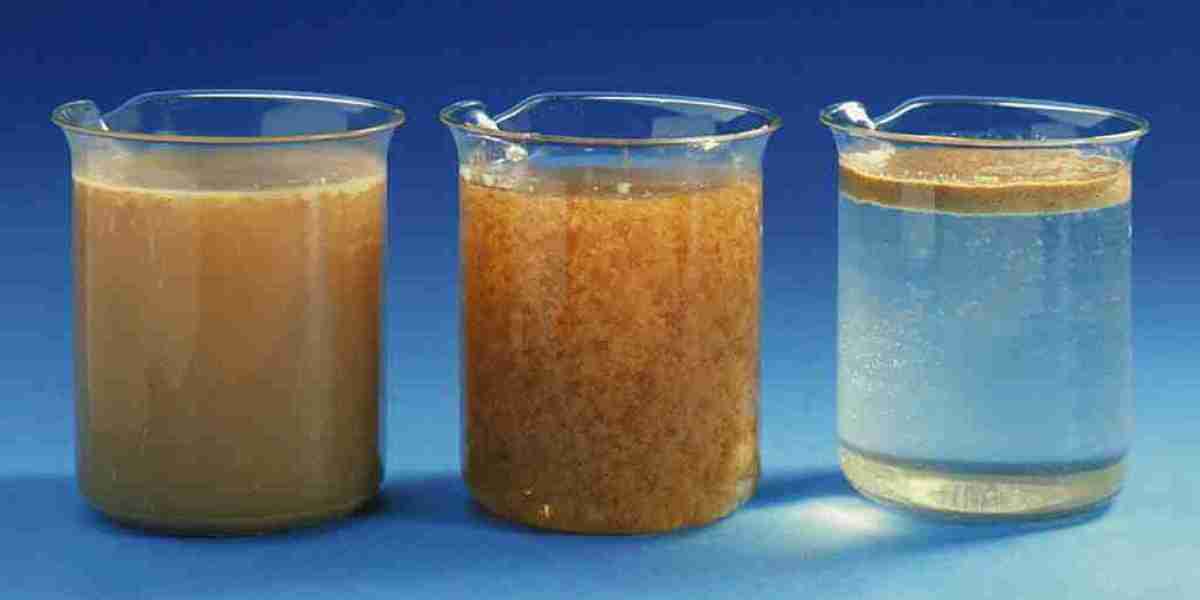Introduction
Municipal wastewater treatment is an essential part of modern urban infrastructure, ensuring that domestic and commercial wastewater is treated before being released into the environment. In this critical process, flocculants and coagulants play a foundational role in enhancing the efficiency and effectiveness of contaminant removal. As municipalities face rising populations, aging infrastructure, and stricter environmental regulations, the flocculant and coagulant market is seeing increased demand and innovation tailored to the public sector.
This article explores how these chemicals function within municipal treatment plants, the key benefits they provide, and how the market is evolving to meet sustainability and compliance challenges.
Stages of Municipal Wastewater Treatment
Municipal treatment plants generally operate through three stages:
Primary Treatment – Removal of large solids through screening and sedimentation.
Secondary Treatment – Biological degradation of organic matter.
Tertiary/Advanced Treatment – Final polishing of effluent for nutrient removal and disinfection.
Flocculants and coagulants are primarily used in primary and tertiary stages, where physical and chemical separation is most critical.
Function of Coagulants and Flocculants in Treatment Plants
A. Coagulants
These are chemicals (often metal salts) that destabilize the negative charges on suspended particles, allowing them to clump together. Common types include:
Aluminum sulfate (alum)
Ferric chloride
Poly-aluminum chloride (PAC)
Coagulants are essential for removing turbidity, organic matter, phosphorus, and color from wastewater.
B. Flocculants
Flocculants, typically long-chain organic polymers, bind the coagulated particles into larger aggregates (flocs). These flocs:
Settle more quickly in sedimentation tanks
Are easier to filter or dewater
Reduce sludge handling costs
Flocculants may be anionic, cationic, or nonionic, depending on the nature of the wastewater and coagulants used.
Benefits of Flocculants and Coagulants in Municipal Settings
Improved Clarity of Treated Water
Enhances turbidity removal and improves discharge quality, meeting environmental standards.Reduced Biological Load
Reduces organic and inorganic suspended solids, lightening the load on biological treatment stages.Enhanced Sludge Dewatering
Produces denser sludge, lowering disposal costs and volume.Nutrient Removal
Advanced coagulants can capture phosphates, reducing eutrophication risks in receiving water bodies.Cost Efficiency
Better solid-liquid separation reduces energy consumption and extends the life of filtration and pumping equipment.
Market Dynamics in Municipal Applications
Rising Demand
Urbanization, industrial expansion, and infrastructure upgrades are driving steady growth in chemical use across municipal plants.
Public Procurement Trends
Governments are prioritizing:
Cost-effective solutions
Environmentally friendly formulations
Vendors with proven compliance and certifications
Integration with Automation
Modern plants use smart dosing systems linked to sensors that optimize chemical usage based on real-time water quality data, reducing waste and improving efficiency.
Challenges in Municipal Adoption
Budget Constraints
Municipal budgets are often limited, and long-term chemical supply contracts may prioritize price over performance or sustainability.Aging Infrastructure
Older plants may not be optimized for advanced treatment systems, limiting the effectiveness of some modern chemical solutions.Operator Training
Inadequate training can lead to over or under-dosing, reducing effectiveness and increasing costs or compliance risks.Variable Influent Composition
Sudden changes in water quality—due to industrial discharges or stormwater—can affect how well coagulants and flocculants perform.
Sustainable Trends in Municipal Water Treatment
1. Green and Bio-Based Alternatives
Municipalities are testing plant-based coagulants and biopolymer flocculants to reduce environmental impact.
2. Integrated Sludge Management
Coagulants and flocculants are being selected not just for treatment efficiency, but also for how they affect downstream sludge dewatering and energy recovery potential.
3. Lifecycle Cost Analysis
Instead of just upfront pricing, municipalities are now evaluating the total cost of ownership—including chemical efficiency, disposal, labor, and equipment wear.
4. Regulatory Compliance
In many countries, treated municipal wastewater must meet increasingly stringent discharge standards. Chemicals must be approved for use under national guidelines (e.g., USEPA, CPCB, EU directives).
Case Example: Urban Utility in Germany
A large municipal wastewater treatment plant in Germany switched from conventional ferric sulfate to a blended coagulant-polymer system. The result:
20% improvement in phosphorus removal
25% reduction in sludge volume
Lower chemical costs over the lifecycle
Easier compliance with EU wastewater directives
This success led to the system being adopted in smaller regional plants as part of a green infrastructure initiative.
Conclusion
The flocculant and coagulant market continues to play a foundational role in municipal wastewater treatment across the globe. As public utilities strive to balance efficiency, compliance, cost, and sustainability, chemical solutions are evolving to meet these multifaceted demands. With growing populations and climate stress on water systems, the strategic application of advanced coagulants and flocculants is not just an operational need—but a public health and environmental imperative.




